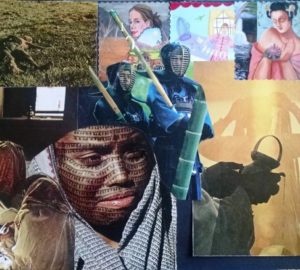“Better than you” is a bimonthly column about ways for individuals to better themselves. From trying new foods, to volunteer work, there are daily activities and tasks a person can do to make their own lives or the lives of others a little bit better.

Art is notoriously therapeutic. Doctors use finger painting classes for Alzheimer’s patients as a way to recall memory. Therapists use art as a way to have patients release inner thoughts. Cancer hospitals are seeing improvements in patients due to their involvement in art therapy. Painting and drawing, sewing and needlepoint, sculpting and music: these are the forms of art that I think of when I envision a task that brings about inner peace. I never thought a green thumb could have the same affect.
I recently visited the Monastery of the Holy Spirit in Conyers, Ga., a Roman Catholic religious order of cloistered contemplative monks, or as they call themselves, Trappists. The secluded and immaculately landscaped grounds alone are enough to draw you there. But my main purpose was the bonsai tree. I had heard that these Catholic monks had specialized in bonsai. Word was, the allure of these tiny trees was something to see.
It all started in the 1960s when Father Paul Bourne came to the Monastery of the Holy Spirit. He was a lifelong lover of art and horticulture, and his early experiences with Japanese and Chinese cultures pushed him towards crafting bonsai. Even after Father Paul’s death, many of his trees that he shaped and pruned to perfection live on in the monasteries gardens.
In honor of Father Paul, the monks continued the bonsai practice and turned it into an enterprise for the monastery itself. On the grounds, which are open to the public, there is a greenhouse and a gift store that holds all the items needed to plant, shape, decorate and take care of your bonsai.
During my visit I learned how these monks in the middle of Georgia came to adopt this traditionally Japanese practice. For them, it is a creative expression, something we at SCAD can truly relate to. Bonsai embodies many of the monastic principles that they live by: contemplation, work, prayer and community.
It all begins with a vision. You have this tiny tree in front of you, a miniature of something that would grow tall and strong in a forest in a far off land. The bark is rough and the trunk twists and turns like a fairy tale. The monks consider bonsai a life-long art that is never finished. Like in other art forms, it requires discipline, attention, practice and care.
I scoured through the greenhouse about five times before being pointed in the direction of a young bougainvillea. It was pretty, with small pink flower-like leaves that surrounded tiny white blooms that trumpeted from the center. I was told that it was small enough where I wouldn’t be overwhelmed with my new hobby, and it wouldn’t die on me if I accidentally forgot to water it for a couple days. It already had an interesting shape, but I pictured the ways I could manipulate it further. I can’t paint. I can’t draw. I’m a writer. The keyboard is where I do my best work. But this new form of natural art felt like something I could wrap my brain around.
Bonsai felt like something that I couldn’t mess up. If I trimmed the wrong branch, a new one would grow. The only mistake I could make was letting my art die. I can already see myself wrapping the wire around its growing limbs, pushing and bending them into new and interesting angles. I can place stones and moss or a tiny Buddha statue around the trunk creating a little world of my very own. Like with all art, the options are limitless.
Bonsai is slow, but not arduous, continuous but not tedious. It is imaginative and allows the gardener to quietly create. It is the perfect combination of elements for a writer. Plus it’s super cool to have something living that you artfully structured and put on display in your home.
With bonsai I feel a commitment, but I don’t feel the pressure that is attached to so many other art forms that I have tried to incorporate into my creative life. My tree will grow, I will watch it bloom. I will wait for it to speak to me and say, “Give me beauty and I will give you patience, depth and insight.”





















